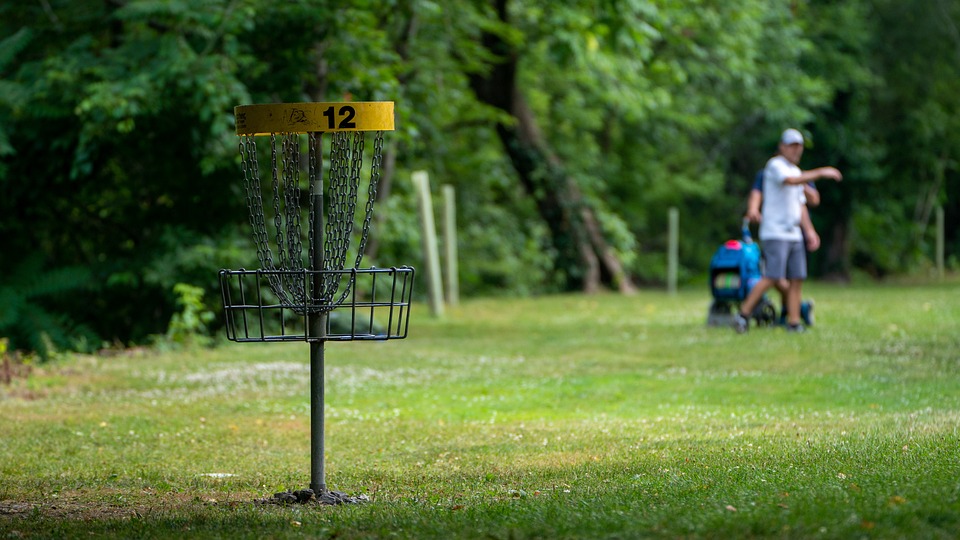Take time to explore Kansas City’s iconic clocks, from Woodhenge to Union Station | KCUR 89.3
This story was first published in KCUR’s Creative Adventure newsletter. You can sign up to receive stories like this in your inbox every Tuesday.
Love it or hate it, Daylight Savings Time might be here to stay. Just two days after springing into another season of later sunsets, the U.S. Senate passed a bipartisan bill to make daylight savings permanent.
The ultimate fate of DST remains to be seen, as the House has yet to vote on the bill. But the tradition of moving your clocks forward and back each year might soon be a relic of the past.
Clocks serve a variety of civic purposes and operate as landmarks and gathering places for the community. Not too many years after the Elizabeth Tower in London was erected in 1858 (where Big Ben famously tolls the hour), clocks started to spring up around Kansas City, dotting sidewalks and facades before the streets were even paved.
Nearly all of those early fixtures are gone, due to urban progress and changing architectural needs. Learn more about the history of horology from a 2017 lecture hosted by Kansas City’s Linda Hall Library, viewable online here.
But there are still a few historic clocks in the area, some dating back to the late 1800s, with a sampling from most decades since. Many lovingly restored, they are representatives from the different eras of Kansas City history.
Here comes the sun
Before mechanics and electricity, time was determined by the passage of the sun, so it’s no surprise that the first time-keeping devices used the path and slant of the sun to divvy up the day, dating back to ancient Rome.
In 1978, archeologists discovered an ancient structure in an area that was soon-to-be-be Smithville Lake. The 36-foot square structure was recognized as a nearly 3,000-year-old solar calendar, determining the solstice and equinox.
A replica with 5- and 6-foot poles was built in Little Platte Park near the original site. Now, it lends its moniker to one of the area’s disc golf courses: Woodhenge.
But modern artists are also inspired by this ancient art. A vertical sundial brightens up an art-adorned courtyard at 9th and Broadway, on the reconstructed Poindexter Building in 1997, as well as UMKC’s Flarsheim Hall (which houses the engineering school) from 2001.
Along with some traditional clocks, Johnson County Community College also has a huge sculptural sundial called Galileo’s Garden on campus, originally installed in 1984, by artist Dale Eldred.
Meet me under the clock
Starting in the 1830s, railways began connecting cities across the county. With mass transportation came the need to coordinate and that coordination required clocks.
The railroad arrived in Kansas City in 1865. Picture the station agent with his pocket watch, flipping it closed and hollering, “All aboard!” Kansas City’s original Union Depot opened in 1878 in the West Bottoms, and had a 125-foot, four-faced clock tower visible from most of the surrounding area, though that building and clock tower are long gone.
After the 1903 flood, a clock was salvaged from a café across the street from the depot, showing the high-water mark. It’s now in the Kansas State Historical Society collection. A podcast describes the clock and its significance.
Opened in 1914, Kansas City’s current Union Station boasts a large dual-sided, 1,000-pound clock in the Grand Hall, with a diameter 6.5 feet across, known as the “Big Ben of the Plains.”
“Meet me under the clock” was a common refrain for arrivals and their greeting parties, and the motto has stayed with Union Station. In 2000, former mayor (now congressman) Emanuel Cleaver II hosted the radio show “Under The Clock” for KCUR, as part of the city’s 150th-anniversary celebrations.
Linking past and present, a model of the grand clock serves as a favorite photo op, regularly updated for cultural events and decorated for the holidays. (For the gear-minded souvenir hound, the clock and motto are also an option in the elongated penny machine.)
But that’s not the only clock at Union Station or the oldest. In 1936, a pedestal clock from the 1880s was moved from downtown to the south side of the station.
Restored in 1999, and then reconstructed in 2016 after the pedestal collapsed, the 20-foot high, 500-pound clock now greets visitors from Pershing Road. The original 1880s clockworks were refurbished by David Falke, the fourth-generation owner of The Clock Shop, and are currently on view at the entrance to Science City.
Time waits for no one

Mrs. Sam Ray Postcard Collection
/
Missouri Valley Special Collections, Kansas City Public Library, Kansas City, Missouri
City dwellers relied on trams and buses; trams and buses relied on schedules; schedules required clocks. When the Pickwick Hotel and Union Bus Terminal opened in 1930, the transit center was the largest in the country. A six-foot clock was installed on the façade.
But needs change. Buses don’t roll through the Union Bus Terminal anymore, where the clock stopped at 3:20 years ago. At 10th and Main, though, a clock still ticks above the unused bus plaza, usurped by the streetcar stop up the block. Coincidentally, it’s the same location as Jaccard’s Jewelry Store, which had a landmark sidewalk clock on display in the 1890s.
Kansas City, Kansas, also boasts an iconic clock and official historic landmark. Originally installed in front of Winkler’s Jewelry in 1915, the elegant four-faced pedestal clock was restored and moved to 7th and Minnesota in 2012 as part of the beautification of the transit plaza.
The pedestal clock is a rare piece from Seth Thomas Clock Company of Connecticut. Perhaps only 20 remain in this particular style from the renowned company.
Once considered obsolete redundancies, sidewalk clocks are making a comeback. They’ve become a popular commemorative item for urban beautification, especially with local Rotary Clubs. You can find pedestal clocks outside the College Basketball Experience, in Mission, Kansas, Parkville and Gladstone, Missouri.
Time is money

Financial sectors have relied on clocks since the 1600s, with governments strictly regulating the hours of trade.
The corner of 10th and Walnut houses one of the only true clocks in Kansas City, chiming the quarter-hour, heard from blocks around.
If you really want to be precise: the word clock derives from “clocca,” for “bell.” If a bell chimes, it’s a clock; if it doesn’t, it’s a timepiece.
In 1953, the 3,300-pound bronze-and-copper clock was added to the 1908 Jarvis Hunt building and became an instant landmark for the Financial District, set to U.S. Naval Observatory time. Many newer Commerce Bank buildings boast a clock tower in their design.
Even today, a clock lends gravitas to a location, a place to look to for authority and coordination. They are included in designs for shopping centers throughout the metro region, with two in the Country Club Plaza, the saffron-topped clock tower of the Plaza Time Building (circa 1940s) and the clock tower at the Triangle Building at 47th and Wornall (circa 1990s), with its decorative tile clock face.
Newer developments include clock towers as centerpieces in their designs, such as the clock tower that overshadows Overland Park’s Farmers Market or the wind turbine-powered tower in the Power & Light District.

Big time institutions
Unsurprisingly, the largest and oldest clock towers in the region are associated with the oldest institutions, edifices that have stood for decades.
At Park University, Mackay Hall is a centerpiece of the campus, with a clock tower rising high on a hill above the town of Parkville. Constructed in 1893, with students supplying the labor, the clock is featured in the university’s logo, too. See inside the tower and hear from the university’s archivist in this video from Flatland.
Fort Leavenworth boasts one of the oldest clock towers in Kansas. Built in the early 1900s, it was refurbished in 1955 and again in 2010. Both times, the clock was serviced by The Clock Shop, though by different generations of clockmakers.
The Historic Truman Courthouse in Independence, Missouri, has taken various forms since the first courthouse was built in 1836. But since 1872 it’s nearly always had a clock tower, including the current structure from 1933.
Now, the building serves as headquarters for the Jackson County Historical Society, which shares a slide show of the various courthouses (and clock towers) through the decades.
Time change
These historic clocks mark time, but sometimes time marks them as the needs of society change.
No longer is the noon hour in the city designated with the drop of an electric time ball, installed in 1881 on the Bullene, Moore & Emery building at 7th and Main Street (now a parking lot). The ball received an electronic signal from Morrison Observatory, linking it to an accurate time-keeping system. It was the first in the west.
As mentioned, historic clocks require extensive refurbishment due to weather exposure and changing technology. And clock repair, or horology, is a vanishing art form. Refurbished clocks often require tens of thousands of dollars in repair and regular expert maintenance.
Every historic clock is a testament to both the idiosyncrasies of time and dedication of preservationists, governments, historic foundations and civic-minded individuals.
The iconic Katz Drugs clock tower at Westport Road and Main Street has been designated one of Kansas City’s Most Endangered Places by Historic Kansas City, with preservationists fearing its loss to developers.

Carlos Moreno
/
KCUR 89.3
A 2011 Kansas City Star article described it: “The art deco building, with its well-known distinctive orange-striped clock tower, was designed by architect Clarence Kivett.” Built in 1934, the building has survived various names and changes to the neighborhood.
Currently, it’s something of a preservation success story. The projected development plans for the lot honor the significant architectural details, including the clock tower, as described in this video by Historic Kansas City.
The Kansas City Business Journal reports that construction at the Katz site will begin soon and developers hope to complete the 185-unit apartment complex next year.
In some cases, what goes around, comes around. At Worlds of Fun, the region’s only floral clock was reinstalled in 2018, having previously graced the grounds from 1977-1996.
Want more adventures like this? Sign up for KCUR’s Creative Adventure Email.





